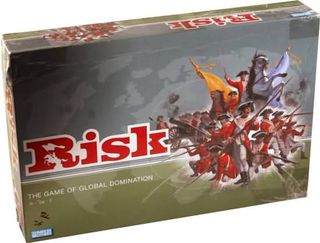I’ve been invited by the editor of The Fabricator en Espanol magazine, the foremost authority on metal fabricating technology, to write another article for the magazine. To that end, I am currently gathering data for a feature that explore how Mexico’s educational instutitions are preparing graduates for work in country’s booming manufacturing sector.
The article will be translatted into Spanish for publication in Latin America.
This will be my second bylined article for the magazine. ¡Hurra!, ¡viva!
 A collection of essays titled, Jumping Off The Page, is now available on the Amazon Kindle platform ($4).
A collection of essays titled, Jumping Off The Page, is now available on the Amazon Kindle platform ($4).
Jumping Off The Page use ephemera as a portal to explore aspects of history and pop culture. Each of the three essays in the eBook begins with a piece of ephemera. The reader is taken on a journey—entered through the doorway of a single piece of paper—that brings the reader into contact with eccentric characters, interesting objects, and amazing places.
The topics selected for inclusion in the first volume of Jumping Off The Page essays include:
Springsteen: The Record Promotion, the Album, and the Rock Photographer
This essay explores the cultural impact of the album and the controversy surrounding the title track of Born in the USA, which was misrepresented by Ronald Reagan during the 1984 Presidential Campaign, as well as the controversy surrounding the cover photograph (an alternative cover photo was used on this rare promotional item). It also touches on the career of legendary rock photographer Annie Leibovitz, who took these iconic photographs of Springsteen.
The Catalog, the Gun Maker, & the Lincoln Park Traps
In 1914, The Charles William Store offered the most progressive mail-order catalog in the country. This essay discusses how the catalog brought the sophistication of New York to Middle America, while exploring the history of the L.C. Smith guns and the unique sports facility on Chicago’s lakefront, The Lincoln Park Traps, where they were used.
The ID Card, the Order of the Carabao, and the Two Hellers
An identification card, hand-signed by Colonel Joseph M. Heller, who was the 1929 Grand Lead and Wheel Carabao, entitled the holder—Rear Admiral
Norman M. Smith—to socialize and cajole with the elite in the U.S. Arms Services. Smith was a member of The Military Order of the Carabao, one of the most unique organizations associated with our nation’s military history. Originally conceived to satirize the pompous Order of the Dragon, the lampoon organization quickly became a serious society of military elites, which included a very unlikely leader in 1929. This essay discusses the Order and Heller’s epic career from civilian doctor to Jewish war hero to Grand Paramount Carabao. In an ironic case of two important men who share the same name but have diametrically opposite worldviews, the essay also showcase the Colonel’s famous namesake, Joseph Heller, the authored one the 20th Century’s greatest satirical, anti-war literary achievements.
The inspiration for this project comes from Weil’s interactions with the thousands of individuals who visit his popular ephemera blog, who have responded enthusiastically to his presentation of history inspired by vintage pieces of ephemera.
To download your copy of Jumping Off The Page eBook, click here.
 One of my favorite Seinfeld episodes features the conclusion of the extended Kramer-Newman game of Risk. It ends on the subway, with an angry Ukrainian smashing the board in response to Kramer’s disparaging comments about his country. “Ukraine is game to you?” he shouts, before scattering the board and pieces across the train.
One of my favorite Seinfeld episodes features the conclusion of the extended Kramer-Newman game of Risk. It ends on the subway, with an angry Ukrainian smashing the board in response to Kramer’s disparaging comments about his country. “Ukraine is game to you?” he shouts, before scattering the board and pieces across the train.
I flashed back on this when reading a post on whether B2B content marketers should embrace gamification as a strategic tactic.
Gamification, as defined by Forrester, is the insertion of game dynamics and mechanics into non-game activities to drive desired behavior. It’s certainly not child’s play.
Brian Burke, an analyst at Gartner, is quoted in the post on its growing importance: Gamification describes the broad trend of employing game mechanics to non-game environments such as innovation, marketing, training, employee performance, health and social change. Enterprise architects, CIOs and planners must be aware of, and lead, the business trend of gamification, educate their business counterparts and collaborate in the evaluation of opportunities within the organization.
For B2B marketers, application of game mechanics can drive interaction with customers, prospects, channel partners, and so on; it can motivate virtually any targeted audience.
The broadly held perception that games are disproportionately a fascination of the young is not well founded. At the dawn of this decade, a BizReport article posted some rather eye-opening figures from the Entertainment Software Association (ESA): The average age of a gamer is 35; over a quarter of gamers are age 50 or over; the preponderance fall in the 18-49 year age range.
R “Ray” Wang, principle analyst and CEO of Constellation Research, offers five simple tips on how businesses can apply game mechanics and dynamics to improve engagement and participation:
1) Intrigue. Content and story line often represent the consumer tech side. The enterprise needs to develop relevant content to keep users engage. Content could include help topics, related information, user generated comments, etc.
2) Reward. Both non-monetary and monetary incentives can be deployed. Rewards should match level of difficulty so users gain a sense of accomplishment. Non-monetary rewards could include exclusive information, access, or recognition.
3) Status. Leaderboards codify status in gamification. Leader boards reward status and provide a recognition mechanism as well as a way to tier users. A robust analytics platform must align with the objectives of gamification and support reward systems.
4) Community. Social is a key part of gamification. Users want to connect, share, and reach out to other “players”. Expect integration back to mobile and social platforms.
5) Challenge. Users must earn a sense of accomplishment to remain engaged. Gamification in the enterprise should tie back to the achievement of levels with increasing difficulty. Challenges will tie back to reward and intrigue over time.
It seems clear that game mechanics and gamification are destined to become an important (and even standard) marketing tool in this age of smartphones, tablets and increasingly mobile and engaging digital communications. If you fail to explore them or choose to ignore them, you do so at your own risk.
“B2B Content Marketing is game to you?”
Well, maybe it should be more of one than you think.
“I want to thank you for being a great resource that I can always count on.”
-Marketing Communications Director at Global Provider of Industrial Printing & Software Company (via email on 11/13/12)
In another life, I collect old paper. My efforts in this hobby have underscored the old maxim that “one man's trash is another man's treasure,” but also have served as reminder that things set aside or forgotten may prove valuable when revisited. This is a lesson B2B marketers would do well to mind.
In a recent Forbes article, Randall Rozin, global director of brand management and marketing communications at Dow Corning, is quoted as saying:
marketers can derive multiple uses from a single piece of content.
For B2B marketers constantly seeking content, reusing content in different forms can ease the stress of content demand and maximize asset value.
I see this firsthand on a regular basis; for example:
The point is that most organizations have content assets they have relegated to the outbox or checked off the to-do list which can be further leveraged to good effect. These assets are more than ephemeral; their useful life that has been extended by the importance of content in today’s B2B marketing.
That importance is growing.
The Forbes article cites a study of 440 B2b marketers conducted by B2B Magazine, in which content marketing was identified as the most important tool for generating leads. Not surprisingly, two-thirds of that group indicates they will be ‘fully’ or ‘very’ engaged in content marketing by next year— a 100% increase over the current year.
The top methods being used for content marketing by the group were, in order, social media, articles, e-newsletters, white papers, blogs and case studies.
However you’re pushing B2B blog content into the market, be advised to look at what’s around the office as you search for good ideas. Take it from an old paper collector—what you’re seeking may be found in unexpected places, and often so close at hand it will surprise you.